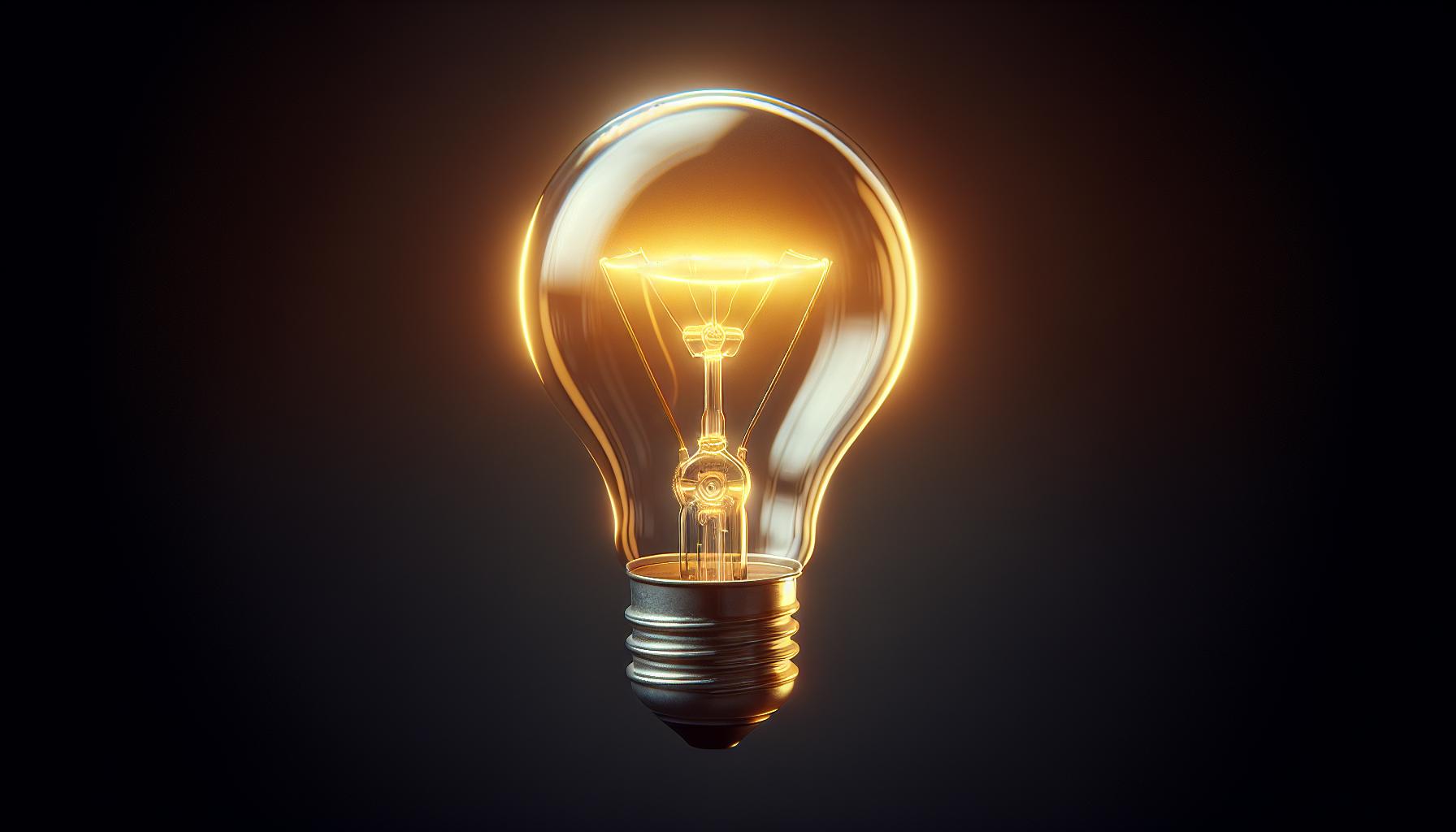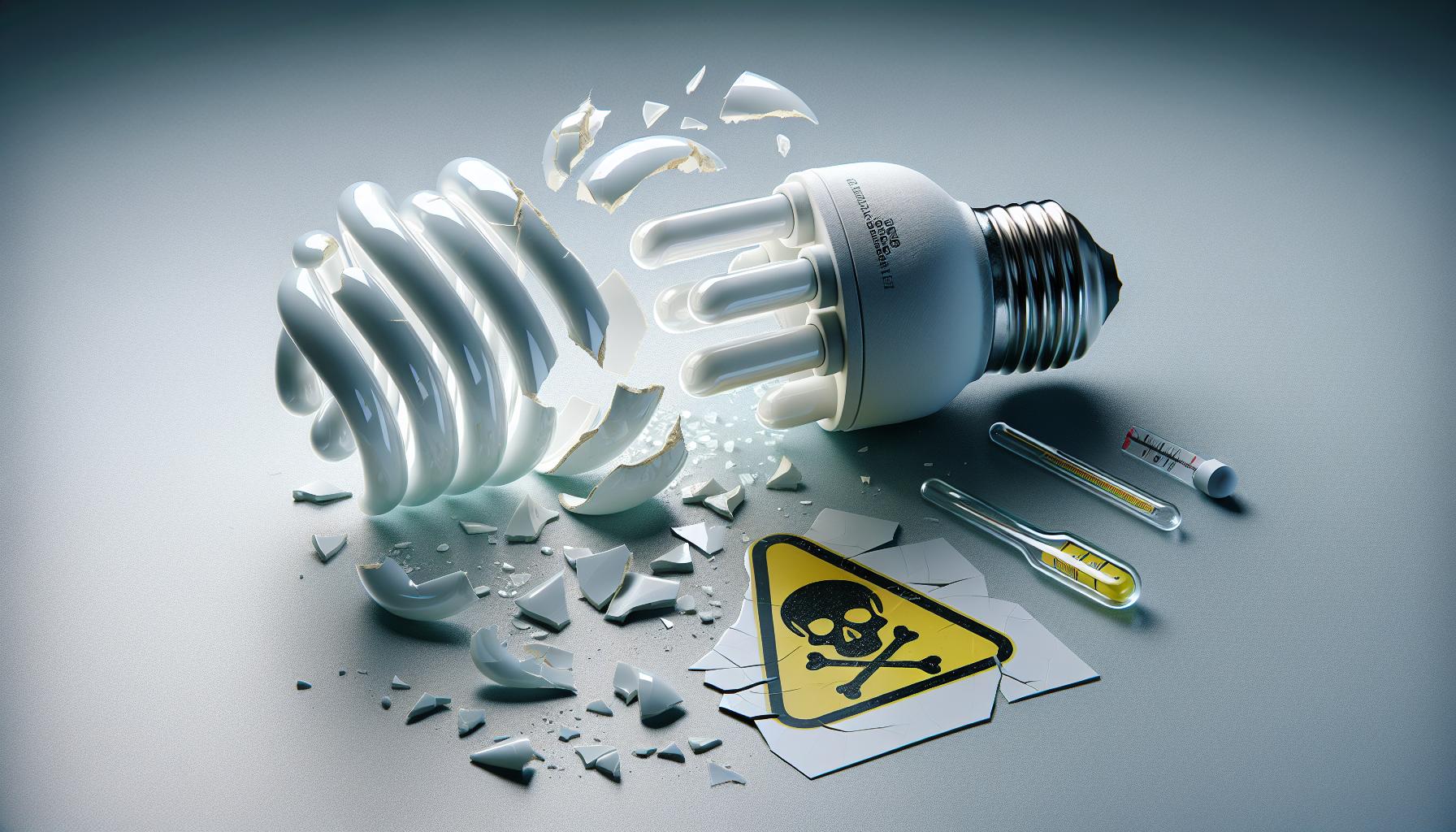Ever wondered if the lights you’re basking in could be silently impacting your health? It’s not just about setting the right mood; the bulbs you choose can have real effects on your well-being.

From headaches to disrupted sleep, it turns out some light bulbs might be more of a foe than a friend. Let’s shed some light on which bulbs could be doing more harm than good.
As you flip the switch on your home lighting, it’s worth knowing what’s glowing overhead. Stick around as we dive into the surprising health implications of common light bulbs.
Effects of Light Bulbs on Health
You’ve probably spent countless hours perfecting the ambiance of your home through DIY projects, with lighting playing a pivotal role. But while you’re basking in the glow of your expertly-lit space, it’s vital to consider how the light bulbs around you are impacting your health.
Understanding Blue Light Exposure
First off, blue light is a significant factor to consider. Emitted by LEDs and fluorescent bulbs, it’s the same light that’s infamous for its presence in screens. Sure, it’s great for alertness and in keeping with the circadian rhythm during daylight hours, but excessive exposure, especially in the evening, can throw off your body’s natural sleep-wake cycle. This is because blue light suppresses melatonin—a hormone that signals your body it’s time to hit the hay.
- Reduce evening blue light by using warm-toned bulbs.
- Consider smart bulbs that adjust color temperature based on the time of day.
Flicker Sensitivity and Headaches
Next up, let’s chat about flickering. Even if it’s barely perceptible, flicker from fluorescent lamps or low-quality LEDs can be a repeat offender for triggering headaches and eye strain. Also, for those sensitive to light or with conditions like epilepsy, flickering lights can escalate to more severe reactions.
- Opt for high-quality, flicker-free LED bulbs to minimize these risks.
The Impact of Brightness
Brightness is a double-edged sword. Too dim and you’re squinting through your latest project, too bright and you’ve got an instant recipe for eye strain. What’s more, the wrong color temperature can also make a room feel unnatural, leading to discomfort.
- Pick bulbs with appropriate lumens, not just watts, to ensure adequate lighting.
- Use task lighting to provide focused light without illuminating an entire area excessively.
Armed with this knowledge, take a moment to reflect on the lighting in your domain. Adjustments may not only elevate the ambiance but also safeguard your well-being, letting you enjoy your space to the fullest. And remember, in the world of DIY and lighting, the devil’s often in the details.
Incandescent Bulbs and Health Concerns
Incandescent bulbs have long been the stalwarts of home lighting. They’re the originals, the classics that many of us still rely on for that warm, comforting glow. But it’s essential to dig into how they might affect your health.
First off, incandescent bulbs are inefficient. They convert less than 10% of their energy into visible light; the rest is dissipated as heat. Because of this, they tend to contribute to higher indoor temperatures, which can affect your comfort and even lead to heat-related stress during warmer months.
Moreover, incandescent bulbs produce a full spectrum of light, including infrared and minimal levels of UV radiation. Although the UV exposure from these bulbs is quite low, especially when compared to natural sunlight, it’s still a point to consider if you’re particularly sensitive or have prolonged exposure without any natural light interchange.
Another point worth noting is their impact on melatonin production. While less blue light is emitted compared to LEDs and fluorescents, the warm light of incandescent bulbs can still influence your sleep-wake cycle if used in the evening hours. It’s wise to think about when and where you’re using them in your home to mitigate this effect.
Finally, the lifespan of incandescent bulbs is relatively short. Sure, they’re cheap and easy to replace, but their frequent burnouts can become an annoyance. They don’t pose a direct health concern per se, but think about the inconvenience of climbing up to change bulbs, especially in hard-to-reach places. It may seem trivial, but safety is paramount when you’re involved in these mini DIY projects.
« How to Check if Light Bulb Is Good with Multimeter: Quick & Easy Test
Can You Get SAD Light Bulbs? Avoid These Common Mistakes »
Remember, lighting is not just about seeing in the dark. It’s about creating an environment that’s conducive to your well-being. Choosing the right bulbs can make a world of difference to your comfort and health, so weigh the pros and cons carefully. As you continue exploring different lighting options, stay informed on how each type can play a role in maintaining your health and enhancing your living spaces.
Compact Fluorescent Bulbs (CFLs) and Health Concerns
When you dive into the world of CFLs, it’s like opening a Pandora’s box of information and misconceptions. Admired for their energy-saving capabilities, CFLs use about 70% less energy than incandescent bulbs. This makes them a hit among eco-conscious DIY enthusiasts like yourself.
However, the health concerns they carry can’t be overlooked. Mercury is the main culprit in CFLs. Although each bulb contains a small amount, it’s enough that if a bulb breaks, it can release harmful mercury vapor. The U.S. Environmental Protection Agency recommends airing out the room for at least 10 minutes if a bulb breaks and carefully following specific clean-up steps.
Another point to ponder is the quality of light CFLs emit. Varied color temperatures of CFLs can affect mood and circadian rhythms, similar to incandescent bulbs. CFLs also emit a small amount of UV radiation. While minimal, prolonged exposure may contribute to the deterioration of materials in your home or even affect your skin over time.
Here’s a quick comparative rundown of energy usage and lifespan between incandescent bulbs and CFLs:
| Bulb Type | Efficiency (Energy Usage) | Average Lifespan |
|---|---|---|
| Incandescent | <10% | 750-2,000 hours |
| CFL | ~30% | 8,000-10,000 hours |
You should also beware of the potential for dirty electricity generated by the ballasts in CFLs. Some studies suggest that this can introduce health risks through electromagnetic radiation. While the subject is still debated among scientists, it’s something to keep in mind if you’re particularly sensitive to your electromagnetic surroundings.
When looking at home lighting solutions, you’ve got to balance your love for that perfect ambiance with a mindful approach towards health and safety. Remember, when you’re shopping for bulbs or tackling your next illuminating project, to consider not just the energy efficiency but also the impact on your well-being. After all, the right lighting does more than just brighten a room—it enhances your world.
Light Emitting Diode (LED) Bulbs and Health Concerns
Transitioning from compact fluorescent lamps (CFLs), you might find LEDs as an attractive alternative due to their impressive lifespan and energy efficiency. LED bulbs do not contain mercury, which immediately reduces the hazards associated with bulb breakage. However, like any technology, LEDs come with their own set of concerns related to health.
One of the main issues that you might want to keep an eye on is the potential impact of LED lighting on sleep patterns. LED bulbs emit blue light, which is effective in boosting attention and mood during daylight hours but can be disruptive at night. Exposure to blue light before bedtime can suppress the production of melatonin, the hormone responsible for regulating sleep, leading to potential sleep disturbances.
Flicker sensitivity is another factor to consider with LED bulbs. Although not noticeable to everyone, some people are sensitive to the flicker that can be produced by LED lighting, which may cause headaches and eye strain. This is a result of the fluctuation in light output that happens when the power supply varies in quality or is incompatible with the LED product.
Photobiological safety standards such as the IEC 62471 are in place to assess and control the potential risks of LED lighting to your eyes and skin. According to these standards, most consumer LEDs are safe under normal use conditions. Nonetheless, if you spend a lot of time under these lights, especially at close range, proper installation and selection are crucial to minimize exposure to intense LED light that could be damaging.
When you’re choosing LED bulbs for your next home DIY project, you should consider the color temperature of the lighting. Warmer, yellow-hued lights typically have less blue light and are more suitable for areas of relaxation, like bedrooms and living rooms. On the other hand, cooler, blue-rich lights might be better suited for workspaces as they help maintain focus and alertness.
Conclusion
Navigating the world of light bulbs isn’t as straightforward as you might think. You’ve seen how CFLs, while energy-efficient, come with their own set of concerns, especially if they break. And LEDs, the long-lasting favorites, aren’t without their issues either, particularly regarding blue light and flicker sensitivity. Remember, it’s all about finding that sweet spot between saving energy and safeguarding your health. So take a moment to consider not just the wattage but also the wellbeing impact when you’re next shopping for bulbs. Your body—and the planet—will thank you for it.
Frequently Asked Questions
Are compact fluorescent bulbs (CFLs) energy efficient?
CFLs are highly energy efficient, using about 70% less energy compared to incandescent bulbs.
What are the health concerns associated with CFL bulbs?
Health concerns include the release of harmful mercury vapor if the bulb breaks and the generation of dirty electricity by the ballasts.
What are the advantages of LED bulbs over CFLs?
LED bulbs offer an impressive lifespan and greater energy efficiency, without the use of mercury.
Can LED bulbs affect sleep patterns?
Yes, the blue light emitted by LED bulbs can interfere with sleep patterns by disrupting melatonin production.
What is flicker sensitivity, and how can LED bulbs be a concern?
Flicker sensitivity can lead to headaches and eye strain, and it’s a potential concern with LED bulbs due to the way they dim by rapidly turning on and off.
What are photobiological safety standards?
Photobiological safety standards are guidelines to assess and control the risks associated with the biological impact of lighting, particularly LED lighting.
How does color temperature affect the choice of LED bulbs for home use?
Color temperature determines the light’s appearance, with warmer colors being better for relaxation and cooler colors suitable for concentration and task lighting. Choose color temperatures appropriate for the intended area in the home.



